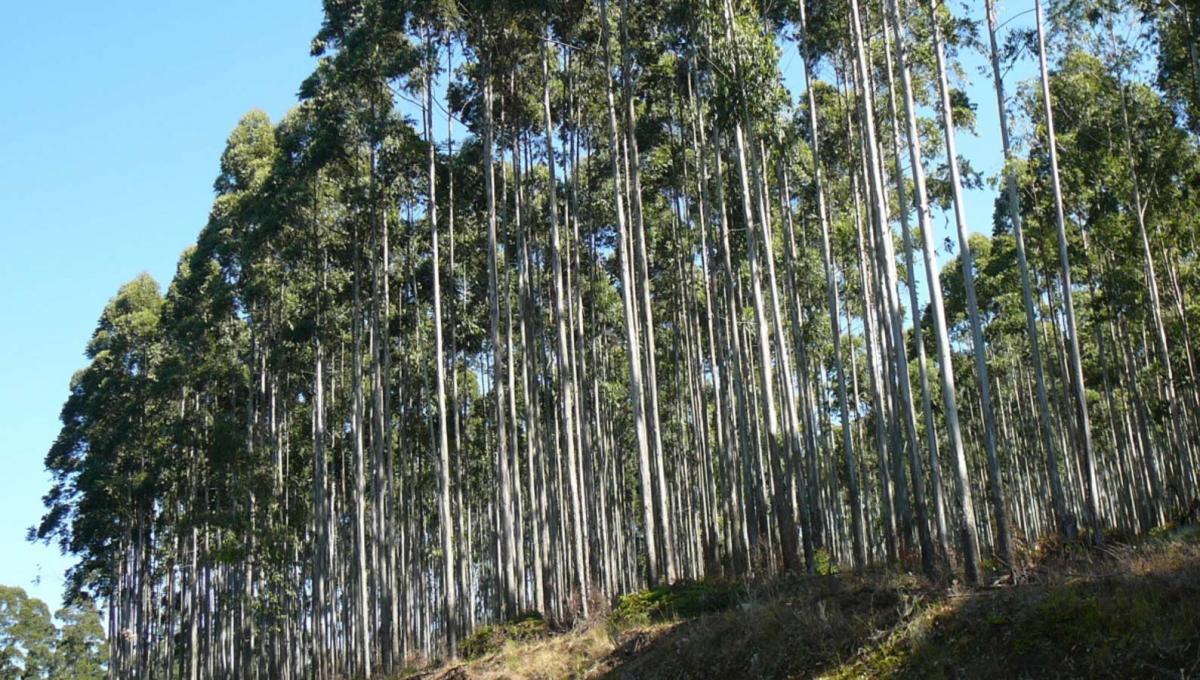Expert view 30 September 2025
- Home
- CIRAD news
- News
- Carbon offset and neutrality
Offsetting CO2 emissions may not be a silver bullet

Carbon offset forestry projects often mean planting fast-growing species such as eucalyptus Photo © CIRAD, Emmanuel Torquebiau
Why is carbon offset so tempting for stakeholders aiming to be carbon-neutral?
Alain Karsenty: It is an attractive solution, because it is simple. For both firms and individuals, it is generally much cheaper to cut emissions outside one's immediate environment. A firm or individual can buy what are known as "carbon credits", generated by projects all over the world, addressing issues relating to energy, waste management, forests and agriculture.
However, carbon offset has two main perverse effects. Because it eases consciences, it does not incite firms to switch to activities that emit less GHG, allows undesirable practices to continue, and fails to encourage consumers to act more responsibly. For instance, travellers who offset their emissions are likely to continue to fly frequently. They are therefore contributing to the expansion of the aviation sector and of airports, and to congestion at those airports. Firms, for their part, can communicate about their carbon neutrality efforts while not actually looking again at their economic model.
Putting off acting cannot be seen as positive.
Should carbon offset be rejected out of hand?
A.K.: Not necessarily. To be of any use in terms of climate change mitigation, carbon offset must fit into an "Avoidance - Reduction - Offset" sequence. Economic players must first seek to avoid emissions, by changing their practices or giving up certain activities. If they cannot or do not want to give up those activities, they must reduce their emissions as much as possible, by optimizing how they operate. If, after doing this, there are still emissions that have been impossible to avoid or reduce, thought can be given to offset.
The problem is that in societies centring on consumption, stakeholders rarely "avoid" developing activities that generate profits, as well as jobs and tax revenue. The first part of the sequence is therefore rarely respected. As regards the second stage, reduction, this can prove costly. While a share of emissions can be avoided by optimizing production processes, structural changes often cost more than carbon credits. The lower the cost of carbon credits, the less inclined firms will be to make those structural changes. As the potential number of offset projects is virtually limitless, so is the amount of carbon credit they can generate, which pushes prices down.
However, offset projects can have significant local benefits in terms of jobs, equipment, or sharing of carbon credit revenue with local communities. They may serve to reduce deforestation or encourage players to change their farming practices, by providing funding that would otherwise be lacking. In some cases, however, the effects may be more debatable, particularly if the carbon offset is done by planting fast-growing trees such as eucalyptus. If they are not sufficiently well thought out, such projects can have adverse effects on biodiversity, water availability and soils.
Why are offset projects having credibility issues?
A.K.: To be credible, carbon offset projects must satisfy at least three conditions. However, this is extremely difficult.
The first condition is additionality. This applies to projects on energy, forests and agriculture.
"Additionality" means that any reductions in emissions are strictly the result of efforts associated with a given project. This means that projects that are sufficiently beneficial in terms of climate change without carbon credits will not be eligible to offset carbon or issue such credits. However, this criterion is extremely difficult to check, because it involves subjective judgements on the part of project leaders and external observers.
In the energy field, many recent projects have passed off scheduled production equipment replacements as major technology switches that would not have been undertaken without the financial incentive of carbon credits.
As regards forestry, projects to set up industrial tree plantings for paper pulp production can be sufficiently profitable without carbon credits. In other words, they would have been implemented in any event. Moreover, the vast majority of carbon offset forestry projects (almost 90% of the credits issued) are aimed at "avoiding deforestation", in other words to protect forests likely to be cleared. The credibility of such projects is debatable: the strategy adopted is often to assume the worst possible scenario - a substantial increase in deforestation - and subsequently claim to have avoided it. However, it is impossible to know when most forest zones will be deforested or at what rate. This depends on the prices paid to producers for agricultural goods, which themselves depend on a set of unpredictable factors (agricultural product price and exchange rate variations, etc.), migration, climate and policy changes.
The other two conditions are more specific to forestry or agricultural projects: the permanence of carbon capture by trees or soils, and consideration of carbon leakage.
A substantial share of emitted CO2 remains in the atmosphere for centuries, and thus contributes to climate change. The greater the volume of CO2 in the atmosphere, the longer it takes to evacuate any additional CO2. Moreover, carbon sinks (forests, seas, etc.) absorb around half the CO2 generated by humans each year. However, those sinks are steadily becoming less powerful, particularly tropical forests as a result of deforestation, drought and rising temperatures. To be truly effective, offset projects should be able to guarantee carbon will be stored for centuries. Obviously, none are capable of doing so, for a range of reasons that jeopardize permanence. Planted forests are subject to fires, and even "mega-fires", which have increased spectacularly in recent years, as well as to plant diseases and parasite attacks. The climate factor is compounded by policy decisions regarding land use for agriculture or mining.
That is not all. "Carbon leakage", as a result of displaced economic pressure, are another problem that particularly affects avoided deforestation projects. Leaks may be direct - farmers move to neighbouring forests as they can no longer access protected forests to plant crops - or indirect - "distant" investors set up plantations in wooded areas elsewhere in a territory. Leakage is almost inevitable insofar as it results from increased demand for land and agricultural products. However, projects cannot influence such changes in demand.
There are certification schemes that guarantee the quality of carbon credits. How do they work?
A.K.: Private certification or standards organizations propose ensuring that these three conditions, among others, are met before certifying carbon credits. These organizations' technical specifications are sound. However, the checks are conducted by auditors accredited by the standards organizations, and those auditors are in competition on the certification market and often inclined to be lenient so as not to lose potential customers. As for the standards organizations, the fact that they are paid a fee for each certified carbon credit means that it is in their interest to multiply the number of credits.
While these certification schemes cannot really fully guarantee offset, they are generally aware of social aspects. By adopting the social safeguarding principles built by the main organization organizations, they protect local people from land grabbing operations aimed at capturing carbon. Nevertheless, disputes and evictions of local people as a result of carbon offset projects sometimes occur in protected areas. Carbon funding gives the authorities the means to "take back control" of protected areas in which people, often migrants, have settled. This has prompted criticisms from NGOs regarding carbon offset forestry projects, which they accuse of depriving those people of access to wood resources and land.
Can we say that forests and agriculture should not be offset mechanisms or carbon markets?
A.K.: Yes, definitely. Such mechanisms, which require strong guarantees in terms of environmental integrity, cannot take account of the variability of the living world, which is too vast. A carbon credit is a right to emit that is granted by a regulator or self-granted in the case of voluntary market players. We cannot take the risk of playing with "counterfeit climate money". Our priority must be to do everything we can to avoid and reduce emissions within our immediate environment, without pretending to have neutralized them by buying unclear carbon credits from a distant project.
Funding agroecological transitions and forest protection is essential, but there are other instruments. Costa Rica, for instance, is funding a vast nationwide programme of payments for environmental by taxing fuel and water supplies. Other fiscal resources could also be found. Efficient, increased taxation of emissions and environmental damage does not only dissuade players from polluting, it also generates cash flows that should be used to fund transitions.




























